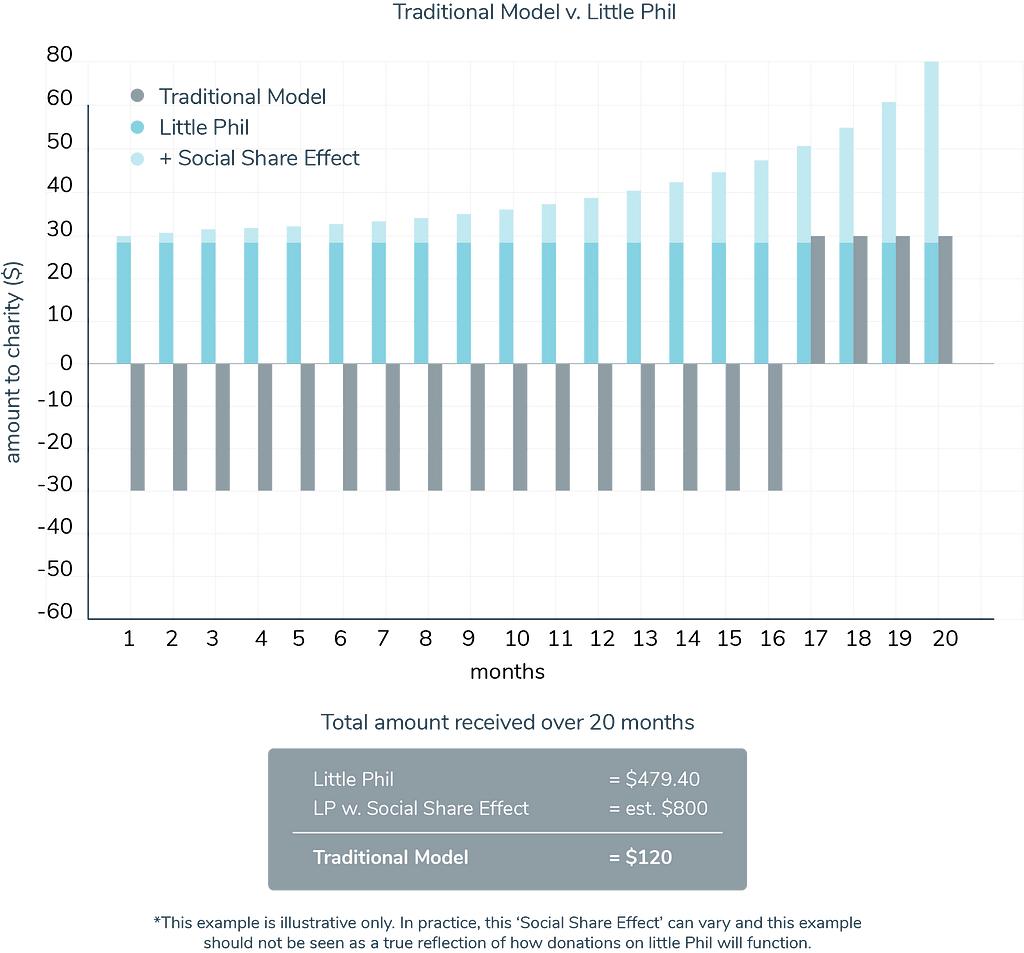Latest news about Bitcoin and all cryptocurrencies. Your daily crypto news habit.
One-third of people don’t trust charities.
What can charities do to fix this? Let me start by saying that I am on the side of charities. I believe what they do is incredible and most of them have good intentions. Although in 2016, trust in charities was the lowest it has ever been.Around 1/3 of people don’t trust charities.
Let me start by saying that I am on the side of charities. I believe what they do is incredible and most of them have good intentions. Although in 2016, trust in charities was the lowest it has ever been.Around 1/3 of people don’t trust charities.
This mistrust in charities has been fuelled by stories of unethical treatment of staff, scandals and reports of minuscule amounts from donations actually making it to the advertised recipients. Not to mention that I don’t want to hear from a charity while I’m sitting down to eat my dinner after a long day at work. Charities are failing to emotionally connect with younger generations and haven’t changed their marketing tactics in response to a generation who are becoming more reliant on smartphones and the internet.
“In recent years reports of poor fundraising practice have eroded public trust, damaged the reputations of some charities, and unfairly cast a shadow over the charity sector as a whole. This has the potential to make a significant impact on donor giving — and thus the number of beneficiaries charities are able to help.”~ Sir Martyn Lewis, CBE Former chair of the National Council for Voluntary Organisations
There are many reasons we have trust issues with charities:
- Get outta my face: I just arrived home from a long day’s work and I have sat down to enjoy some time with my family. So it’s no surprise that I’m not happy when someone knocks on my door asking for money (in fact, I’m sure many people would greet them with some explicit words). I also don’t answer calls from random or private numbers anymore; does anyone who isn’t from a cold calling marketing firm even call anymore? They will leave a voicemail if it’s important. Fundraising firms aren’t capitalising on the fact that younger generations would rather give on their own terms, to campaigns they care about, on a mobile phone or digital device they’re familiar with.
- Lack of transparency: We live in a time where people can track their lunch being delivered in real-time, but generally have no ability to see the impact of their giving. People expect transparency over how their donations are used; specifically around charity accountability, administrative costs and the direct impact for the receiver. Nearly 60% of younger generations agree that seeing the impact of their donation significantly affects their decision to give, but normally such visibility is only accessible to large donors.
If I can see how far away my Uber is, why can’t I see where my charity donation is going?
- Expensive admin costs: Third-party fundraisers, international money transfers and internal charity staffing costs can take up the majority of funds raised by a charitable organisation, leaving only cents from each dollar to make an impact on the actual cause. Sometimes charities will need to pay exorbitant upfront fees to marketing firms of between 800–1700% of the value of each monthly subscription obtained. This could mean it takes up to 17 months for the charity to break even!! If I want to contribute for shorter amounts of time, I can actually cost the charity money. These upfront costs also make it harder for smaller charities who don’t have the necessary capital available to pay for these marketing services.
- Lack of emotional connection: People, especially donors from the younger demographic, do not respond favourably to being interrupted with negative emotional experiences. If charities do not adapt and start providing positive donor-centered experiences, there will be a significant drop in donations as the population ages. Most current donation platforms do not allow donors to see the impact of their donation. This lack of emotional connection leads to disengagement and donor attrition.
- Exploitation of generosity: Charities generally have no way of validating their beneficiaries’ authenticity or their access to support from other charities, leading to inefficient use of funds.
So what can charities do to fix these problems and emotionally connect with givers (especially the younger generations)?
Little Phil believes it has an answer to these problems, using a smart phone app, user experience and blockchain technology to help givers connect emotionally with the causes they are donating to.
Check out this youtube video explaining how the Little Phil platform functions:
Little Phil solves all current trust issues that people have with charities.
- Updated fundraising methods: Access the Little Phil app on your mobile at any time and find a cause you care about. It’s easy to do and on your terms.
- High transparency: Finally know exactly what your charitable donation is being used for. Little Phil safely locks your donation into a smart contract and only releases it once proof of impact has been verified. This gives you peace of mind that your donation will only be used as you intended, to ensure that if you contribute towards heart surgery for Mary, the charity can only use your money for heart surgery for Mary.
- Low intermediary costs: While third-party marketing firms can charge up to 80% for fundraising, Little Phil only charges a maximum of 6% per donation, with a declining fee rate as the volume of donations through our platform increases. Our technology will be open for all fundraisers to use, to avoid having to dedicate large amounts of time and resources into developing their own fundraising solutions. This will level the playing field for smaller charities by creating a powerful low-cost alternative in the fundraising space.
- Positive emotional connection: The Little Phil platform is designed to engage you, the donor, rather than merely taking your money. We create exciting emotional connections with real-time feedback from the receiver of your donation. This provides a positive feedback loop and an enjoyable platform for both users and receivers, along with the charities supporting them.
- Avoiding exploitation of generosity: Before a receiver can be listed on the platform, a Unique Digital Identity (UDID) is created using biometric data. This allows charities to authenticate that a receiver and their needs are genuine. It allows cross-collaboration from charities without the need to share databases. UDID is an electronic solution that uses biometric data to document and make sure only legitimate receivers can register and remain on our platform. This technology also ends the chances of duplicate funding and provides a more trustworthy platform for users.
Little Phil uses these functions while harnessing the power of blockchain to set a new standard of expectations around giving to charity and change the future of charitable donations. Check out Little Phil’s website for more info and to sign up for updates.
One-third of people don't trust charities. was originally published in Hacker Noon on Medium, where people are continuing the conversation by highlighting and responding to this story.
Disclaimer
The views and opinions expressed in this article are solely those of the authors and do not reflect the views of Bitcoin Insider. Every investment and trading move involves risk - this is especially true for cryptocurrencies given their volatility. We strongly advise our readers to conduct their own research when making a decision.

